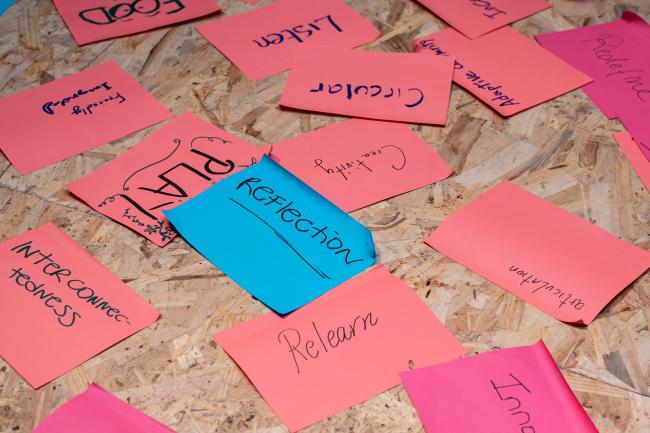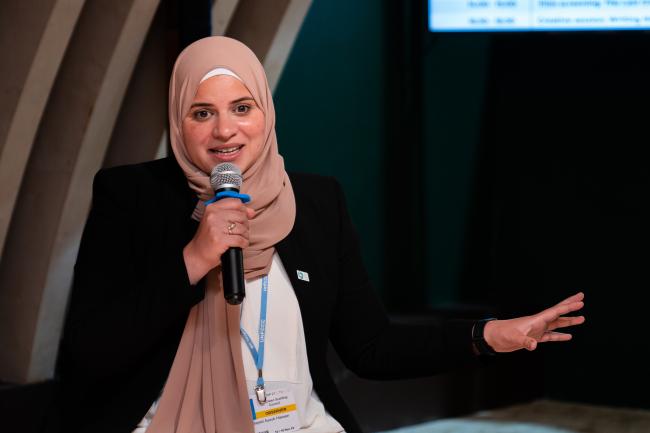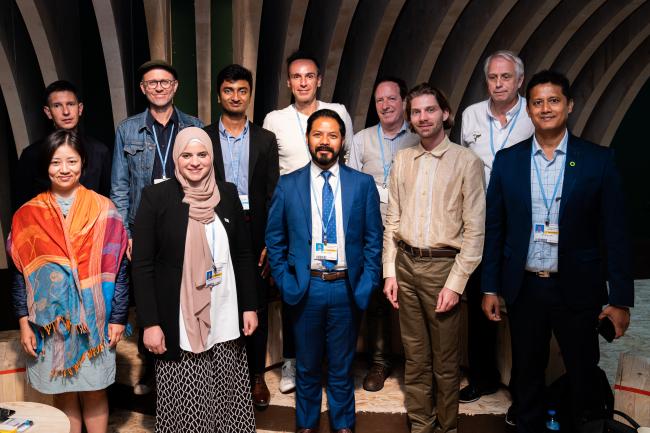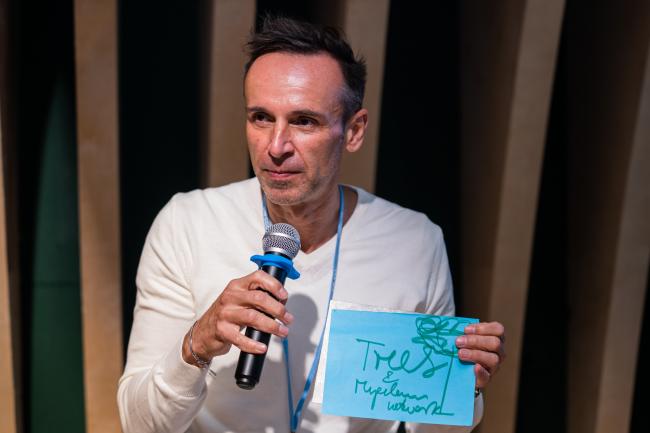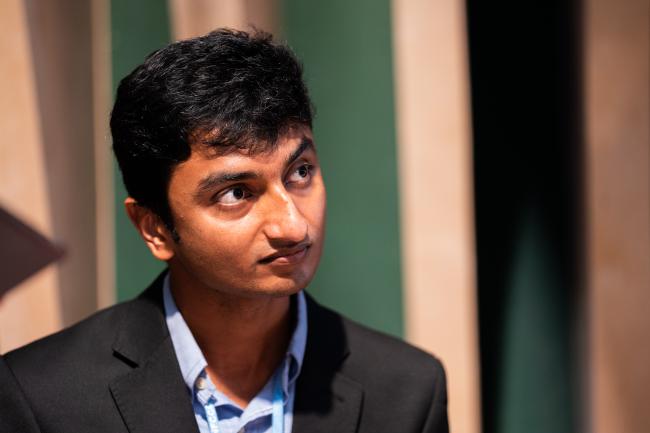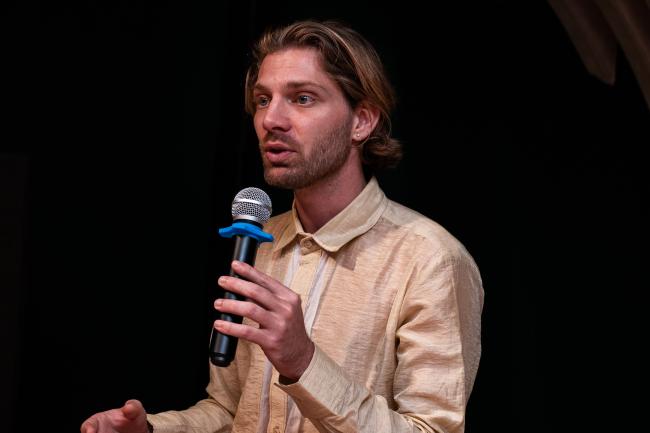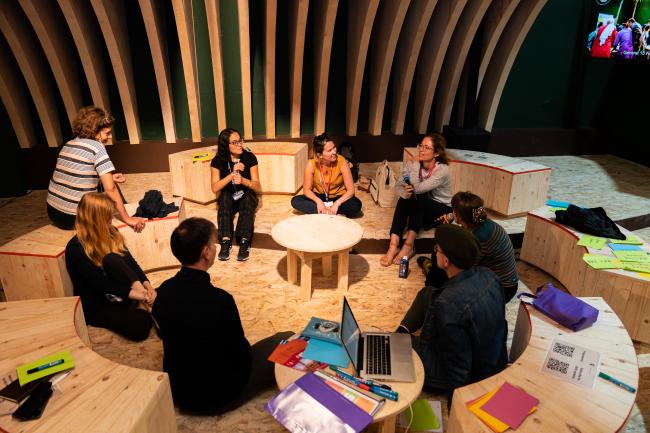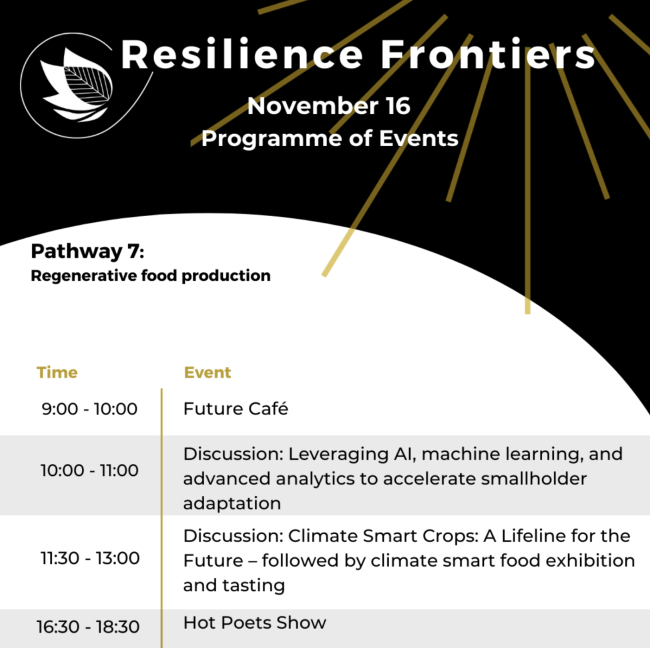Applying a Holistic Ecosystem-Centered Approach to Optimize Future Health and Wellbeing
Weaving together future imaginaries through poetry, film, and conversation, the Resilience Frontiers Pavilion set out on a sixth pathway: “Applying a holistic ecosystem-centered approach to optimize future health and wellbeing.”
In the day’s first discussion on regenerative planning, Kotchakorn Voraakhom, a landscape architect from Thailand, guided speakers and Pavilion guests through a conversation envisioning renewed and reconsidered cities, which aligns with Pathway 6’s focus on creating “newly transformed neighborhoods that mirror ecological patterns.”
Voraakhom opened the discussion by asking participants to write down keywords reflecting what is required to achieve sustainable urban futures. Responses included, inter alia: “articulation” of principles and ideas across different elements of urban planning; “locality” in terms of building practices aligning with local environments; and “adaptive” planning that enables renewable uses of resources.
Mauricio Rodas, Penn Institute for Urban Research, shared his experience implementing an urban garden programme while he was Mayor of Quito, Ecuador. By engaging citizens in an institutionalized, long-term process, the programme helped address poverty, as citizens’ gardens produced goods for markets. “This is an example of things you can do on the policy path by engaging the community in a meaningful way,” Rodas noted.
Voraakhom next prompted participants to offer keywords regarding what policy can do to create cities we want, and participants responded with: participation, resilience, incentive, grounded, empowerment, tradition, and connection.
Amira Ayoub, World Green Building Council, recounted her work with Bedouin peoples to create a community center using the concept of “biomimicry.” For example, just as the caddisfly larvae builds a home from whatever materials are immediately available, this project used local materials and engaged the community as co-creators. Ayoub underscored that in such transformative projects “you don’t know the end result. You go with the flow of the process.”
Juan Pastor-Ivars, United Nations University, reiterated the importance of community participation, which is central to his work to transform abandoned urban spaces in Japan into gardens. Bringing local residents and their knowledge into the process allows for “preserving the traditional but also transforming the present for the next generation.”
Finally, Voraakhom asked speakers and participants about first step needed to unlock such transformations. Rodas emphasized the need for appropriation of high-quality public spaces, which can contribute to more egalitarian societies; Ayoub stressed the need for taking the time to relearn and rethink in ways that mimic the gradual evolution of ecosystems; and Ivars highlighted the first step of collaboration and participation.
In the Pavilion’s second event on communities as living organisms, Ayoub moderated a discussion around imagining ecosystems as living organisms. She first asked participants to share keywords about their favorite organisms. Responses ranged from invisible or easily overlooked organisms, such as mycelium networks, which are “self-regulating,” to powerful animals, such as tigers and elephants, to organic, interconnected concepts such as “Gaïa,” which is often used to think in terms of whole earth systems.
Ayoub then asked for reflections on the relationships between organisms and built ecosystems and what is needed to enhance these relationships.
Klaus Klaas Loenhart, Harvard University, shared as an example his work using plants to perform the building climatization work that is normally delegated to machines. Loenhart emphasized that what is required for similar projects is finding the right client and “guts” to go beyond what would be found in standard guidebooks. He underscored the need to enable decision makers to move into “the process of newness.”
Indraneel Dharwadkar, ReGen Villages, stressed that “regenerative systems can benefit from adaptation financing,” yet to date most of decision-makers’ attention has been focused on mitigation through carbon credit mechanisms. He emphasized that such thinking does not fully consider the interconnections between energy, water, and food systems.
Participant Bremley Lyngdoh, Initiatives of Change International, stressed that as food crises and climate migration affect more and more people, we need to understand that on the ground “it’s about livelihoods.” He said you cannot preach conservation to people who are trying to feed their families and who may be migrating far from their homes due to the impacts of climate change. Lyngdoh added that financing is key to addressing these problems.
In the afternoon, Pavilion guests watched the film The Last Glaciers, which tells the story of vanishing ecosystems, threatened livelihoods, and the need to act now to address climate change. Following the film, a panel, comprised of the film’s director Craig Leeson, Marc Garcia-Duran, Underwater Gardens International, and Rachel Barr from UBQ, discussed turning alarm into action and transitioning economies in ways that align them with natural systems.
After the film, Hot Poets led a “poetic response” produced by stringing together participants’ suggestions for new descriptors of glaciers, including “history encapsulated,” “melt down,” “shoulder giant,” and “hilly heartbeat.”
The final session of the day was another creative writing workshop with Liv Torc and Chris Redmond of the Hot Poets. They guided the group through some stretching exercises, a “free-write session,” and a “poetry fire” to enable participants to directly engage with their "right creative brain" and quickly access ideas and visions for the future. The session culminated in connecting the pathway to the creative process and gleaning responses to “for those who don’t know what to do with a city.” The content gathered from this exercise will be turned into a poem by the Hot Poets.
Organizers: Resilience Frontiers, UNFCCC
Contact: Susan Robertson I srobertson@unfccc.int
For more information: https://resiliencefrontiers.org
To receive free coverage of global environmental events delivered to your inbox, subscribe to the ENB Update newsletter.

